hola a todos,estoy restaurando una torreta de popa de avro lincoln,una boulton paul type D,si alguien tiene fotos del interior de epoca,se agradece

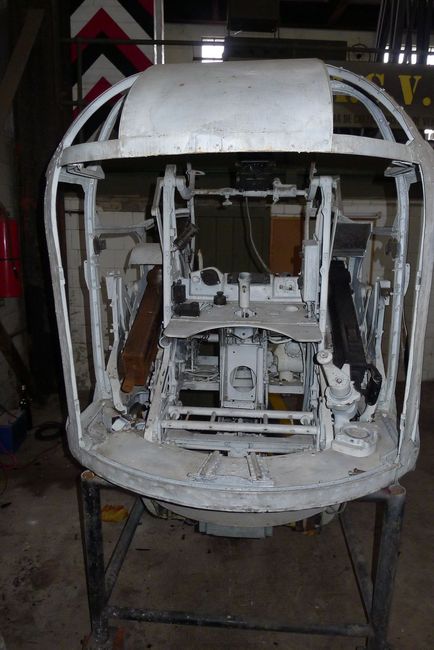
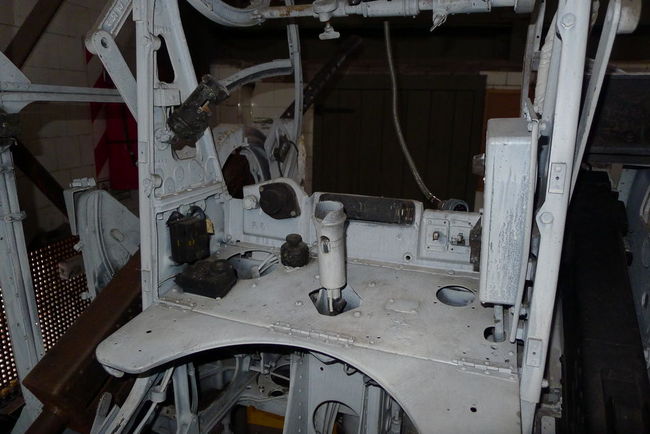

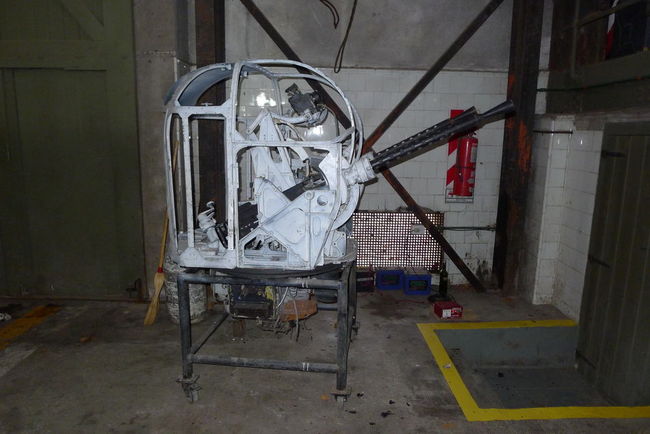





Estás usando un navegador obsoleto. No se pueden mostrar estos u otros sitios web correctamente.
Se debe actualizar o usar un navegador alternativo.
Se debe actualizar o usar un navegador alternativo.
Restaurando una torreta de popa de Avro Lincoln
- Tema iniciado martinleon2013
- Fecha de inicio
The Boulton Paul Type D Tail Turret Pt - 1
After four years of indecision the Air Staff finally issued production orders for turrets armed with heavy-calibre guns. Both Parnall and Boulton Paul had previously submitted designs for such turrets, but circumstances had prevented their adoption. Boulton Paul designers decided to embark on a completely new design which proved to be extremely roomy and efficient. The new turret was armed with 12.7 mm (0.5 in) Browning guns mounted low and to each side of the seated gunner. The turret had a fabricated structure, most of which was above mounting ring level, the guns being mounted upright in cradles. The ammunition supply was located in the centre fuselage well forward of the turret, thus placing the heavy boxes 255 kg (560 lb) when loaded near the centre of gravity. The structure of the turret consisted of two outboard members carrying the outer bearings of the gun cradle, and two inner sections supporting the inner bearings. The gun mountings were quite substantial, being strengthened Type T turret mountings. The turret was designed for the Mk.IC gyro sight, but this was replaced by the improved Mk.IIC gyro. The sight was mounted on a horizontal tube supported by two levers which were connected to the torque tube to move in harmony with the gun cradles.
The power system was the usual electro-hydraulic unit, with one modification - the elevation mechanism was changed from a hydraulic ram to a hydraulic motor, which was found to be more accurate in control at slow speeds. The gunner sat at his control table with the well-proven controllers to his front, while his central sighting panel was supported in channels which permitted it to slide downwards, leaving an open aperture when conditions were such that sighting through the panel was difficult. Two side panels were also arranged to slide open if needed. The turret doors were mounted on tracks, the two doors meeting in the centre and locking automatically when the outer edges were pushed outwards. There was provision for hand turning the turret in the event of power failure. The 'Free' and 'Engaged' lever was set to the 'Free' position, which automatically broke the gun-firing circuit and disengaged the drive. If the gunner was incapacitated, the turret could be turned by pressing a switch in the fuselage outside the turret, which enabled the dome to be turned until the doors could be opened and the gunner taken out.
The Boulton Paul Type D Tail Turret - Pt 2
The heavy ammuntion belts were stored in boxes in the rear fuselage, and the feed mechanism worked as follows: when the firing button was pressed, an electrical relay was energised which switched on powered sprockets which pulled the belts out of the boxes, feeding them through ducting to the 90 degrees bends at the turret base. Ammunition feed assisters then hoisted the belts into the guns, which were controlled by clutches which engaged when the belts reached a preset tension, ensuring an even feed. The guns were fired by Dunlop Maxifort solenoids, and cocked by hand lever chargers of BP design. The gun barrels were aligned with the sight by lock nuts on the rear support mounting, the guns being usually set to converge at 549 m (600 yds). The electrical load of the turret was considerable, a load of 130 amps was needed, and the maximum load of the main drive motor was 330 amps during the start sequence, though the average was 45 amps. Gun heater, feed assisters, and firing solenoids all needed considerable power, and after problems with the circuit breakers on full load, arrangements were made to cut off the gun and the AGLT scanner heaters (see below), when the guns were fired. An accumulator charged by the aircraft generator supplied the 24 volt power, all fuses and circuit breakers being in easy reach of the seated gunner.
As mentioned above, the guns were sighted by the Mk.IIC gyro sight, the range control of the sight being operated by the gunner's right foot. The selector dimmer and height and airspeed control boxes were fixed on the right hand gun chassis support tube. The sight switch and fire/safe switches were fitted to the top right of the control table. If a Mk.IIIA reflector sight was used, the graticule illumination was controlled by the rheostat on the sight. The Type D was the first to be fitted with the AGLT (airborne gun-laying turret) blind tracking radar system, codenamed Village Inn. The control panel for this was behind the gunner's right shoulder, the spot cut-off switch being fitted on the control table. A system of IFF (identification friend or foe) was devised, using an infra-red detector which would identify any friendly aircraft approaching from the rear fitted with an infra red lamp in the nose. The receiver, which used a 10,000 volt detector, was fitted to a bracket mounted to the left of the gunsight, the control box for the system being mounted between the gunner's legs. Gunners were not altogether happy with the mechanism, as they could imagine themselves being electrocuted in the event of battle damage or a loose connection.
The prototype turrets were manufactured at the company's Pendeford Lane works, where most of the development took place. The main production was undertaken by Joseph Lucas, where most Boulton Paul turrets were made. The first squadron aircraft to be fitted with the new turret was the Handley Page Halifax VII, which used the Type D in operations in the last months of the war. The turret was the contemporary of the Parnall FN.82 which was designed for the same specification, but after its successful use in the Halifax it was the Type D which was chosen for the Avro Lincoln heavy bomber, which served for many years after the war.
Several Type D turrets still exist, many having been rebuilt by enthusiasts. A prime example can be seen at the Royal Air Force Museum at Hendon, where it is exhibited on a stand.
Details of the Type D Turret
Position: Tail
Motive power: BP electro-hydraulic
Power source: Accumolators charged by aircraft generator
Operating voltage: 24 v
Armament: Two 12.7 mm (0.5 in) Browning No.2 Mk.II guns
Ammunition: 1,515 rounds per gun
Belt feed assisters: BP booster units, Dunmore motors
Firing system: Dunlop Magnovox solenoids Type 14 D.I:G:S
Gun chargers: Hand levers, BP design
Armoured shielding: 9 mm (0.354 in) plate. front aspect
Gunsighting: GGS Mk.IIC gyro sight, or Mk.IIIA reflector sight. Light models AGLT Blind Tracking Radar
Weight of turret:
Empty: 200 kg (440 lb)
Armed: 249 kg (548 lb)
Weight of guns: 33 kg (72 1/2 lb)
Weight of ammunition: 415 kg (914 lb)
Operating limits:
Traverse: 90 degrees either side
Elevation: 45 degrees above horizontal
Depression: 45 degrees below horizontal
Speed of operation:
Traverse: 35 degrees/sec
Elevation: 35 degrees/sec
The following aircraft were fitted with the Boulton Paul Type D Turret
Aircraft type: Handley Page Halifax B.Mk.VII; Avro Lincoln B.Mk.I & II
Type & Mark: D.Mk.II
Position: Tail
Guns: 2 x 12.7 mm (0.5 in) Browning No.2 Mk.II
Traverse: 180 degrees
Elevation: 45 degrees
Depression: 45 degrees
Status: Series production
After four years of indecision the Air Staff finally issued production orders for turrets armed with heavy-calibre guns. Both Parnall and Boulton Paul had previously submitted designs for such turrets, but circumstances had prevented their adoption. Boulton Paul designers decided to embark on a completely new design which proved to be extremely roomy and efficient. The new turret was armed with 12.7 mm (0.5 in) Browning guns mounted low and to each side of the seated gunner. The turret had a fabricated structure, most of which was above mounting ring level, the guns being mounted upright in cradles. The ammunition supply was located in the centre fuselage well forward of the turret, thus placing the heavy boxes 255 kg (560 lb) when loaded near the centre of gravity. The structure of the turret consisted of two outboard members carrying the outer bearings of the gun cradle, and two inner sections supporting the inner bearings. The gun mountings were quite substantial, being strengthened Type T turret mountings. The turret was designed for the Mk.IC gyro sight, but this was replaced by the improved Mk.IIC gyro. The sight was mounted on a horizontal tube supported by two levers which were connected to the torque tube to move in harmony with the gun cradles.
The power system was the usual electro-hydraulic unit, with one modification - the elevation mechanism was changed from a hydraulic ram to a hydraulic motor, which was found to be more accurate in control at slow speeds. The gunner sat at his control table with the well-proven controllers to his front, while his central sighting panel was supported in channels which permitted it to slide downwards, leaving an open aperture when conditions were such that sighting through the panel was difficult. Two side panels were also arranged to slide open if needed. The turret doors were mounted on tracks, the two doors meeting in the centre and locking automatically when the outer edges were pushed outwards. There was provision for hand turning the turret in the event of power failure. The 'Free' and 'Engaged' lever was set to the 'Free' position, which automatically broke the gun-firing circuit and disengaged the drive. If the gunner was incapacitated, the turret could be turned by pressing a switch in the fuselage outside the turret, which enabled the dome to be turned until the doors could be opened and the gunner taken out.
The Boulton Paul Type D Tail Turret - Pt 2
The heavy ammuntion belts were stored in boxes in the rear fuselage, and the feed mechanism worked as follows: when the firing button was pressed, an electrical relay was energised which switched on powered sprockets which pulled the belts out of the boxes, feeding them through ducting to the 90 degrees bends at the turret base. Ammunition feed assisters then hoisted the belts into the guns, which were controlled by clutches which engaged when the belts reached a preset tension, ensuring an even feed. The guns were fired by Dunlop Maxifort solenoids, and cocked by hand lever chargers of BP design. The gun barrels were aligned with the sight by lock nuts on the rear support mounting, the guns being usually set to converge at 549 m (600 yds). The electrical load of the turret was considerable, a load of 130 amps was needed, and the maximum load of the main drive motor was 330 amps during the start sequence, though the average was 45 amps. Gun heater, feed assisters, and firing solenoids all needed considerable power, and after problems with the circuit breakers on full load, arrangements were made to cut off the gun and the AGLT scanner heaters (see below), when the guns were fired. An accumulator charged by the aircraft generator supplied the 24 volt power, all fuses and circuit breakers being in easy reach of the seated gunner.
As mentioned above, the guns were sighted by the Mk.IIC gyro sight, the range control of the sight being operated by the gunner's right foot. The selector dimmer and height and airspeed control boxes were fixed on the right hand gun chassis support tube. The sight switch and fire/safe switches were fitted to the top right of the control table. If a Mk.IIIA reflector sight was used, the graticule illumination was controlled by the rheostat on the sight. The Type D was the first to be fitted with the AGLT (airborne gun-laying turret) blind tracking radar system, codenamed Village Inn. The control panel for this was behind the gunner's right shoulder, the spot cut-off switch being fitted on the control table. A system of IFF (identification friend or foe) was devised, using an infra-red detector which would identify any friendly aircraft approaching from the rear fitted with an infra red lamp in the nose. The receiver, which used a 10,000 volt detector, was fitted to a bracket mounted to the left of the gunsight, the control box for the system being mounted between the gunner's legs. Gunners were not altogether happy with the mechanism, as they could imagine themselves being electrocuted in the event of battle damage or a loose connection.
The prototype turrets were manufactured at the company's Pendeford Lane works, where most of the development took place. The main production was undertaken by Joseph Lucas, where most Boulton Paul turrets were made. The first squadron aircraft to be fitted with the new turret was the Handley Page Halifax VII, which used the Type D in operations in the last months of the war. The turret was the contemporary of the Parnall FN.82 which was designed for the same specification, but after its successful use in the Halifax it was the Type D which was chosen for the Avro Lincoln heavy bomber, which served for many years after the war.
Several Type D turrets still exist, many having been rebuilt by enthusiasts. A prime example can be seen at the Royal Air Force Museum at Hendon, where it is exhibited on a stand.
Details of the Type D Turret
Position: Tail
Motive power: BP electro-hydraulic
Power source: Accumolators charged by aircraft generator
Operating voltage: 24 v
Armament: Two 12.7 mm (0.5 in) Browning No.2 Mk.II guns
Ammunition: 1,515 rounds per gun
Belt feed assisters: BP booster units, Dunmore motors
Firing system: Dunlop Magnovox solenoids Type 14 D.I:G:S
Gun chargers: Hand levers, BP design
Armoured shielding: 9 mm (0.354 in) plate. front aspect
Gunsighting: GGS Mk.IIC gyro sight, or Mk.IIIA reflector sight. Light models AGLT Blind Tracking Radar
Weight of turret:
Empty: 200 kg (440 lb)
Armed: 249 kg (548 lb)
Weight of guns: 33 kg (72 1/2 lb)
Weight of ammunition: 415 kg (914 lb)
Operating limits:
Traverse: 90 degrees either side
Elevation: 45 degrees above horizontal
Depression: 45 degrees below horizontal
Speed of operation:
Traverse: 35 degrees/sec
Elevation: 35 degrees/sec
The following aircraft were fitted with the Boulton Paul Type D Turret
Aircraft type: Handley Page Halifax B.Mk.VII; Avro Lincoln B.Mk.I & II
Type & Mark: D.Mk.II
Position: Tail
Guns: 2 x 12.7 mm (0.5 in) Browning No.2 Mk.II
Traverse: 180 degrees
Elevation: 45 degrees
Depression: 45 degrees
Status: Series production
que belleza!
me imagino ese artillero disparando las trazantes contra el caza que se le le venia encima haciendo lo mismo , un verdadero duelo
ahora se usan drones...
la guerra se volvió gay
me imagino ese artillero disparando las trazantes contra el caza que se le le venia encima haciendo lo mismo , un verdadero duelo
ahora se usan drones...
la guerra se volvió gay

Wow, y dónde conseguiste eso??
Sent from my HM NOTE 1LTE using Tapatalk
Desarmadero de electronica de Luis Deza,Av constituyentes 3840 de caba hace varias decadas...ahora es un edificio
sisi gracias esto lo tengo,esta en este libro,que compre hace mucho "British Aircraft Armament: RAF Gun Turrets from 1914 to the Present Day v. 1",pero es lo que hay nomas,y de la tipo D 4 hojas y sin fotos de interior como para dar certificacion de lo que uno hace esta bien...menos aun numero de partes,graciasEspero le pueda servir esto.



Slds.
Deberías ponerte en contacto con la gente de Proyecto Lincoln
https://www.facebook.com/pages/Proyecto-Avro-Lincoln/185644778136521
http://proyectoavrolincoln.foroactivo.com/
Supongo que no les costará mucho sacarle algunas fotos a la torreta trasera del Lincoln de Morón o incluso arreglar alguna visita de ser posible.
https://www.facebook.com/pages/Proyecto-Avro-Lincoln/185644778136521
http://proyectoavrolincoln.foroactivo.com/
Supongo que no les costará mucho sacarle algunas fotos a la torreta trasera del Lincoln de Morón o incluso arreglar alguna visita de ser posible.
Víctor Eduardo Barbanente
Colaborador
Estimado
Podría tomar fotos y mostrarnos las marcas de las Browning, quien las fabricó, etc.?
Podrían haber sido fabricadas en EEUU o en Inglaterra e incluso ser reemplazos de las originales
Le agradecería la molestia
Cordiales Saludos
Podría tomar fotos y mostrarnos las marcas de las Browning, quien las fabricó, etc.?
Podrían haber sido fabricadas en EEUU o en Inglaterra e incluso ser reemplazos de las originales
Le agradecería la molestia
Cordiales Saludos
...bue...las marcas son "martincito", son truchas,las hice yo,pero copia fiel,estan los planos en la web,hice para vehiculos,la M2, la 1919,la vickers vgo,tipo K,etc...es cosa de agarrar madera,lima moldes,fundir en aluminio o hierro y tornear un rato..las marcas de las que vi en museos de afuera (raf hendon,iwm,paris,etc) eran frigidare,general motors,y colt....estas son las replicas truchometralladoras made in beccar....Estimado
Podría tomar fotos y mostrarnos las marcas de las Browning, quien las fabricó, etc.?
Podrían haber sido fabricadas en EEUU o en Inglaterra e incluso ser reemplazos de las originales
Le agradecería la molestia
Cordiales Saludos

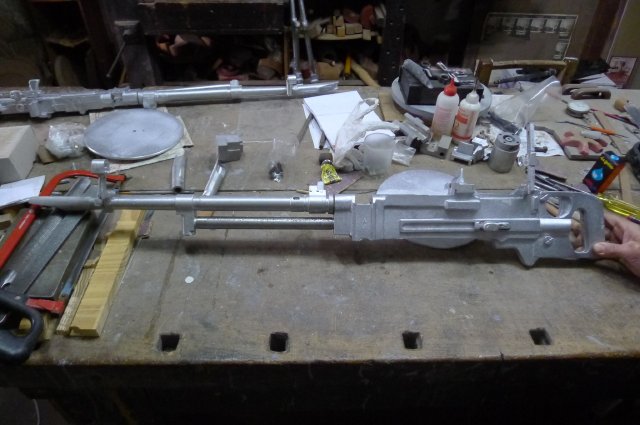






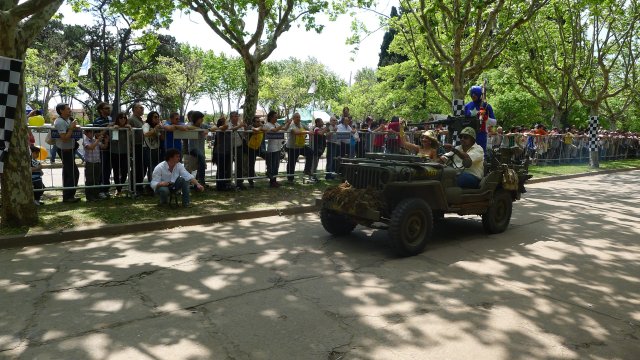

tambien hice un lanzallamas M2 con unos matafuegos de plovo vencidos,un piat...etc...una de las de la torreta es la que puse en el jeep SAS de un amigo en autoclasica 2013...las fotos de los vehiculos es en nuestro stand de autoclasica 2013...siempre armamos circo tipo ww2 o vietnam...con armamento trucho o airsoft..pero se pone garra...esto fue en octubre pasado..http://foro.aacvm.com.ar/viewtopic.php?f=6&t=7241
2013...etc.....http://foro.aacvm.com.ar/viewtopic.php?f=6&t=5543
La verdad que te felicito por el excelente laburo......bue...las marcas son "martincito", son truchas,las hice yo,pero copia fiel,estan los planos en la web,hice para vehiculos,la M2, la 1919,la vickers vgo,tipo K,etc...es cosa de agarrar madera,lima moldes,fundir en aluminio o hierro y tornear un rato..las marcas de las que vi en museos de afuera (raf hendon,iwm,paris,etc) eran frigidare,general motors,y colt....estas son las replicas truchometralladoras made in beccar....

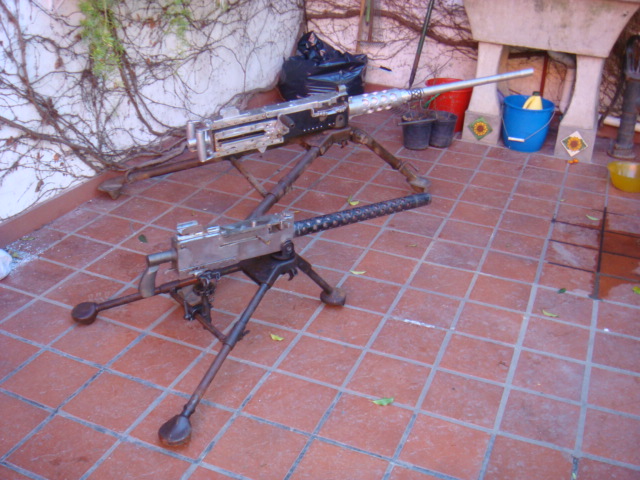




















 manosy te envidio un monton, yo hace rato que ando con ganas de hacer una replica de una FN MAG y su afuste...pero lo vengo postergando por falta $$$, tiempo y sobre todo predisposición de mi amigo herrero que me presta el taller y herramientas...que ahora se esta mudando. Ojala algun dia te pueda mostrar el trabajo terminado!
manosy te envidio un monton, yo hace rato que ando con ganas de hacer una replica de una FN MAG y su afuste...pero lo vengo postergando por falta $$$, tiempo y sobre todo predisposición de mi amigo herrero que me presta el taller y herramientas...que ahora se esta mudando. Ojala algun dia te pueda mostrar el trabajo terminado! 
Rober D.
Para hacer una replica de MAG tenes marcarcadoras de airsoft.
http://1982militariaforum.forumcommunity.net/?t=53818447
Enviado desde mi Samsung con Tapatalk
Para hacer una replica de MAG tenes marcarcadoras de airsoft.
http://1982militariaforum.forumcommunity.net/?t=53818447
Enviado desde mi Samsung con Tapatalk
Deberías ponerte en contacto con la gente de Proyecto Lincoln
https://www.facebook.com/pages/Proyecto-Avro-Lincoln/185644778136521
http://proyectoavrolincoln.foroactivo.com/
Supongo que no les costará mucho sacarle algunas fotos a la torreta trasera del Lincoln de Morón o incluso arreglar alguna visita de ser posible.
los contacte hace como 5 anios...cri cri cri...les avise que en el deposito de surplus de Deza en av de los constituyentes,que cerraba sus puertas por fallecimiento del propietario,y haberse vendido los lotes para hacer un edificio,estaban las radio,instrumentos,mira de bombardeo,radar h2s,etc etc etc que si lo retiraban se lo regalaban...se chatarreo todo para hacer un edificio...en fin les avise varias veces y cri cri cri cri....
.entra al foro "foro aacvm" y logeate,ahi en armas contacta a mariano paz....esta en eso...armando unaLa verdad que te felicito por el excelente laburo...manosy te envidio un monton, yo hace rato que ando con ganas de hacer una replica de una FN MAG y su afuste...pero lo vengo postergando por falta $$$, tiempo y sobre todo predisposición de mi amigo herrero que me presta el taller y herramientas...que ahora se esta mudando. Ojala algun dia te pueda mostrar el trabajo terminado!

los contacte hace como 5 anios...cri cri cri...les avise que en el deposito de surplus de Deza en av de los constituyentes,que cerraba sus puertas por fallecimiento del propietario,y haberse vendido los lotes para hacer un edificio,estaban las radio,instrumentos,mira de bombardeo,radar h2s,etc etc etc que si lo retiraban se lo regalaban...se chatarreo todo para hacer un edificio...en fin les avise varias veces y cri cri cri cri....
Que lástima
esto fue el ultimo dia en el deposito de Deza...instrumental ingles..aleman...italiano....y miles de cosas de radioQue lástima
a modo de ejemplo de lo que era el deposito de Deza de la calle constituyentes....
receptor aleman ww2 torn Eb
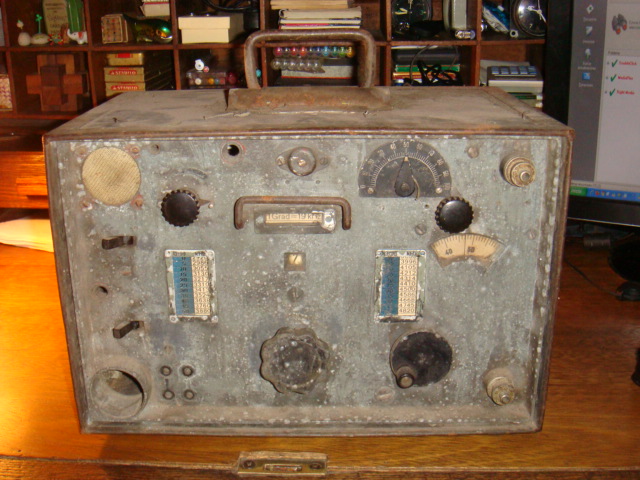
BC 654
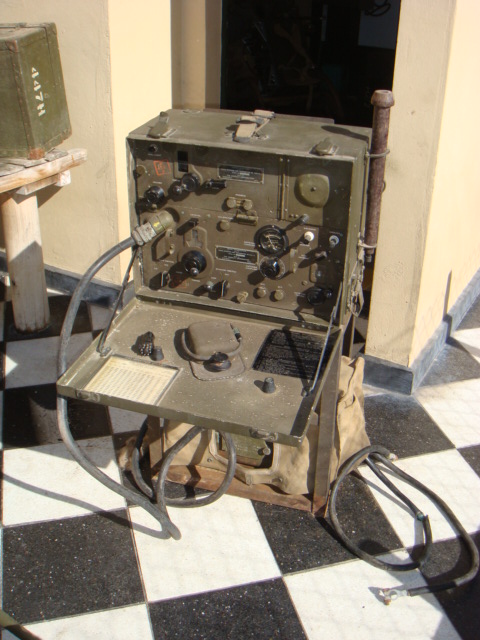
WIRELESS SET 19

BC 611 Y PROTOTIPO NACIONAL

ESTACION DE RADIO DEL LINCOLN/LANCASTER COMPLETA....habia unas cuantas al momento del cierre...tres transmisores seguro..
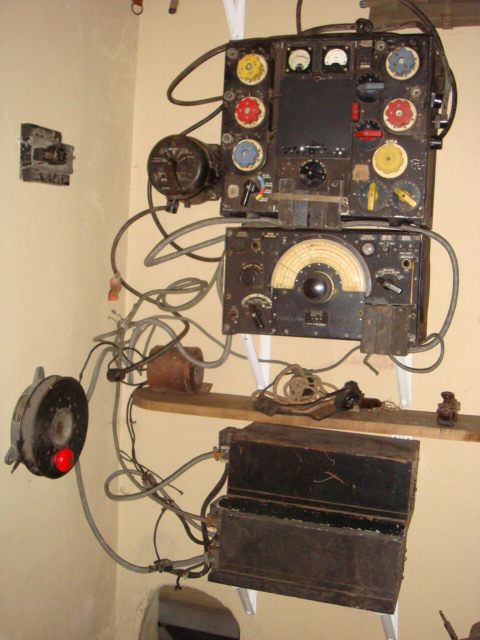
receptor aleman de submarinos y dirigibles

estacion alemana de 5w ww2...con sus marcas alemanas (serian de la compra de material de comunicaciones de 1936)
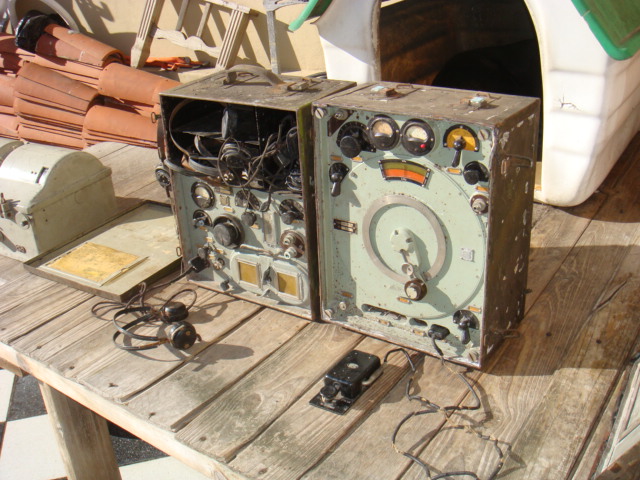
detector de minas scr 625 ww2

estacion de radio del Ju 52 (FuG V)


......mas de 130 equipos de radio militares en la coleccion...casi todo de revolver los depositos de Deza...era disney....
receptor aleman ww2 torn Eb
BC 654
WIRELESS SET 19
BC 611 Y PROTOTIPO NACIONAL
ESTACION DE RADIO DEL LINCOLN/LANCASTER COMPLETA....habia unas cuantas al momento del cierre...tres transmisores seguro..
receptor aleman de submarinos y dirigibles
estacion alemana de 5w ww2...con sus marcas alemanas (serian de la compra de material de comunicaciones de 1936)
detector de minas scr 625 ww2
estacion de radio del Ju 52 (FuG V)


......mas de 130 equipos de radio militares en la coleccion...casi todo de revolver los depositos de Deza...era disney....
